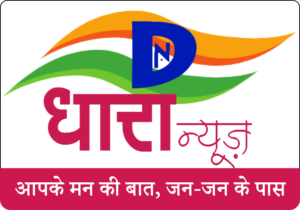Varicose ottomax + veins are a common condition that affects numerous people worldwide. While they are commonly viewed as an aesthetic issue, varicose blood vessels can sometimes indicate a much more severe underlying concern. In this write-up, we will check out the risk aspects and symptoms connected with varicose blood vessels to help you comprehend when it is time to look for clinical attention.
What are Varicose Veins?
Varicose veins are enlarged, twisted veins that usually show up on the legs. They happen when the valves within the blood vessels become weak or damaged, creating blood to stream backwards and swimming pool in the capillaries. This leads to the characteristic protruding and twisted appearance of varicose capillaries.
While any person can establish varicose blood vessels, certain elements enhance the possibility of their event. Comprehending these threat elements can assist you determine if tonerin lék your varicose capillaries call for medical interest.
Threat Aspects for Varicose Veins
Several elements add to the advancement of varicose veins:
- Age: Varicose capillaries are extra typical in older adults due to the all-natural damage of capillaries with time.
- Gender: Women are most likely to establish varicose veins, mostly because of hormonal modifications during pregnancy and menopause.
- Household Background: If your parents or grandparents had varicose veins, you have a greater threat of developing them.
- Excessive weight: Excess weight puts additional stress on the blood vessels, making them more prone to ending up being varicose.
- Less Active Way Of Life: Lack of exercise can deteriorate blood vessel walls and harm flow.
- Occupation: Jobs that include prolonged standing or sitting can enhance the risk of varicose veins.
If you have one or more of these threat elements, it is important to monitor your veins for any kind of indications of varicose capillaries.
Signs And Symptoms of Varicose Veins
Varicose veins are generally easy to detect, as they appear as bulging, twisted capillaries beneath the skin. However, they can likewise cause the following signs and symptoms:
- Aching or thickness in the afflicted location
- Swelling, specifically after prolonged periods of standing or resting
- Burning or pain feeling in the legs
- Itching around the capillaries
- Pains or troubled legs, particularly during the night
- Skin staining or ulcers in extreme instances
While these signs may not constantly show a severe issue, it is important to take notice of them, particularly if they get worse in time. Persistent discomfort, swelling, or skin adjustments might signify a hidden concern that requires medical interest.
When to Seek Clinical Focus
If you have varicose capillaries with any one of the following signs or symptoms, it is advisable to speak with a medical care expert:
- Discomfort or pain that hinders daily tasks
- Swelling or soreness in the afflicted leg
- Open sores or ulcers on the leg
- Hemorrhaging from the varicose blood vessels
- Modifications in skin structure, such as enlarging or inflammation
A medical analysis can determine the severity of your varicose blood vessels and eliminate any underlying conditions that might require therapy.
Treatment Choices for Varicose Veins
The good news is, several treatment choices are offered for varicose veins, ranging from traditional measures to minimally intrusive procedures:
- Way Of Living Changes: Routine exercise, maintaining a healthy weight, and elevating your legs can help reduce symptoms and prevent varicose blood vessels from worsening.
- Compression Panty hose: These specially developed stockings use pressure to the legs, promoting far better blood flow and reducing pain.
- Sclerotherapy: A common therapy for small varicose blood vessels and spider capillaries, sclerotherapy involves injecting a remedy into the affected veins, triggering them to shut and at some point fade.
- Endovenous Laser Therapy (EVLT): This minimally intrusive procedure uses laser power to seal the affected veins, rerouting blood flow to much healthier veins.
- Surgical Interventions: In serious instances, surgical procedures such as vein removing or ligation might be necessary to eliminate or block harmed veins.
Your doctor will analyze your condition and suggest one of the most ideal therapy choice based on your individual requirements.
Finally
While varicose capillaries are often safe, recognizing the danger factors and symptoms related to them is critical for recognizing when clinical attention is necessary. If you experience persistent pain, swelling, or various other worrying symptoms, speak with a healthcare specialist for an examination and proper therapy options. Bear in mind, early intervention can assist prevent complications and improve your overall quality of life.
